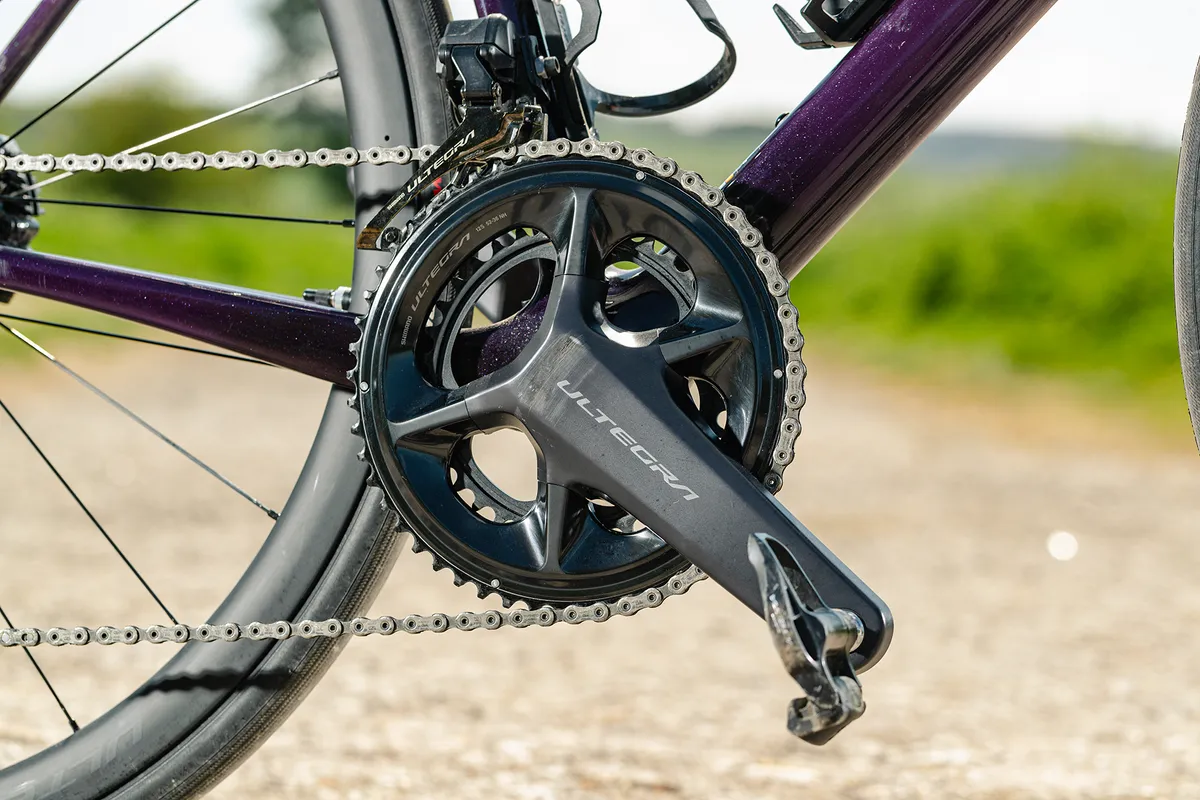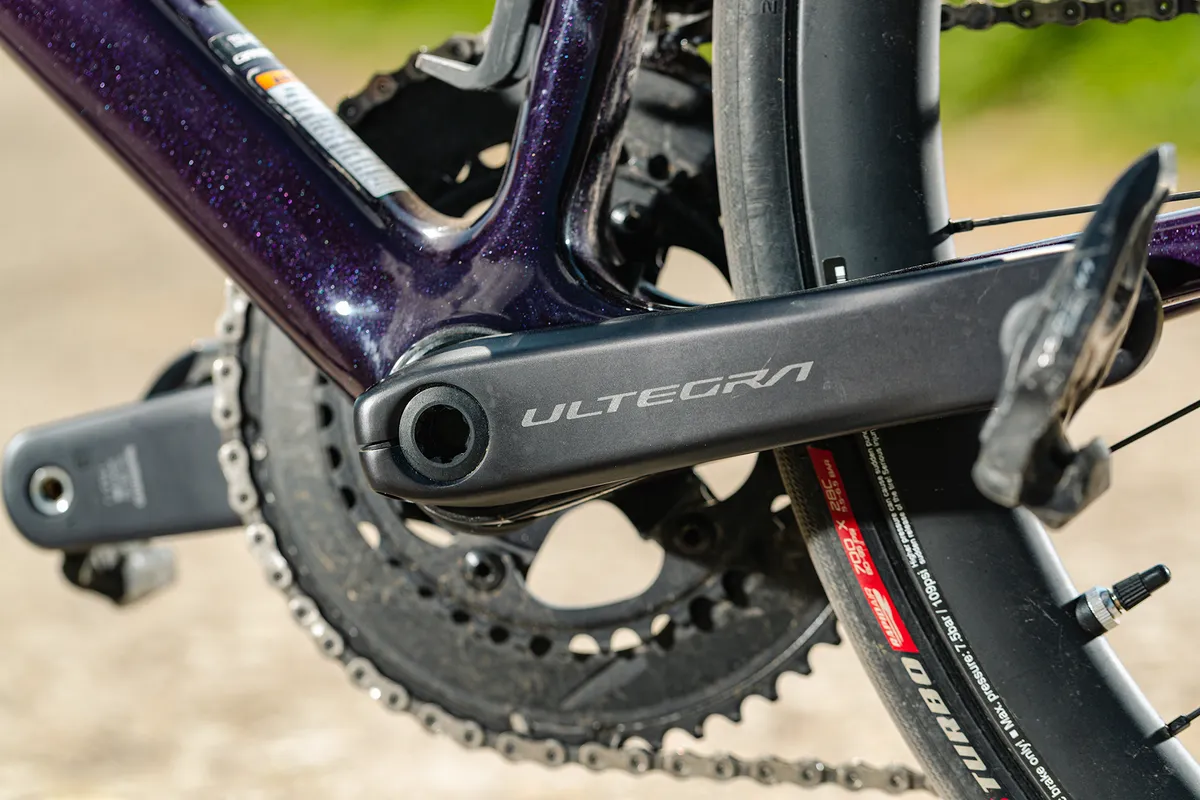SQUIRREL_13113274
Shimano Ultegra is better than ever before, with this latest update, Ultegra R8100, seriously raising the question: does anyone actually need Dura-Ace?
Shimano’s previous-generation, 11-speed R8070 Ultegra Di2 groupset has, for a generation of bikes, set the benchmark in terms of performance relative to cost. And while the latest Ultegra R8170 Di2 is more expensive than before, there's a marked step up in performance.
Yes, Dura-Ace R9100 Di2 weighs less and has a fancier finish, but it comes at a price. However, Ultegra has, over the years, proven to be as dependably slick and reliable.
In short, the new Shimano Ultegra R8100 Di2 groupset, launched in August 2021, has elevated things once again.
The semi-wireless shifting is razor-sharp, the braking has improved – in terms of both performance and feel – and you get the full connectivity Shimano’s groupsets should have had years ago.
Semi-wireless setup
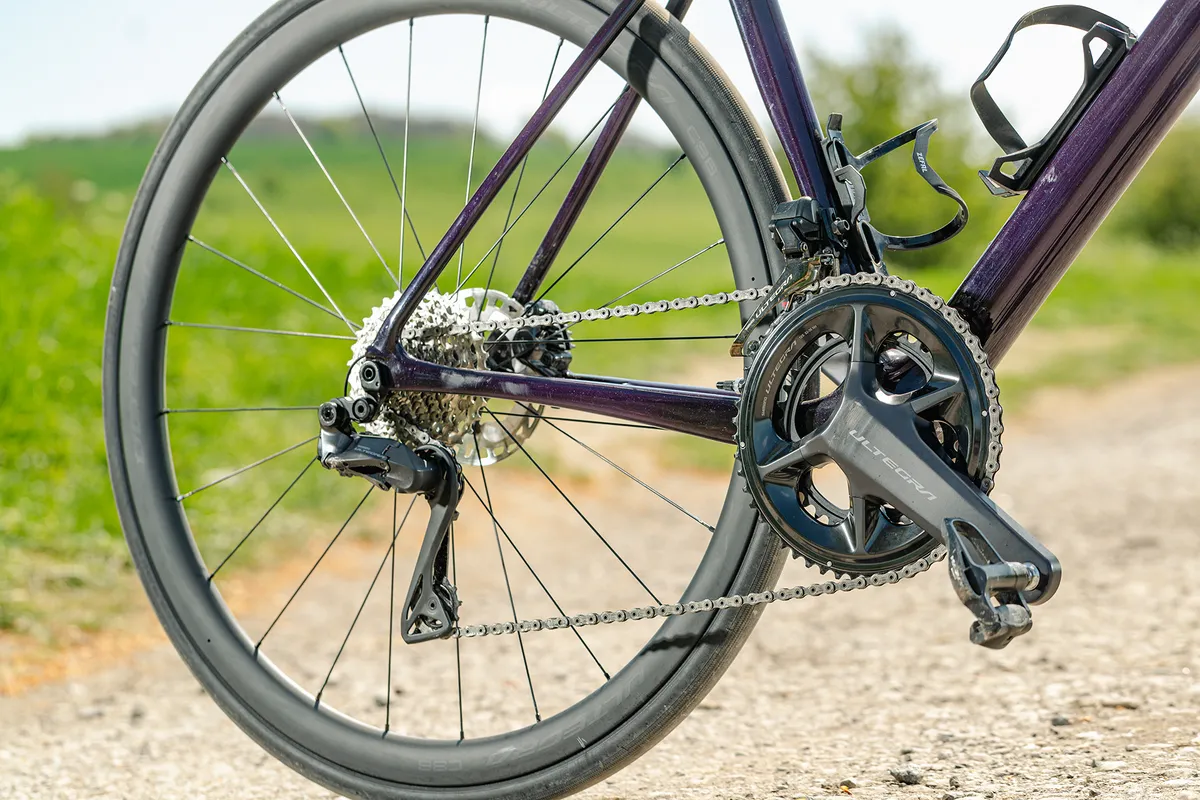
Like the new flagship Shimano Dura-Ace Di2 R9200 groupset, Ultegra R8100 Di2 gets 12-speed gearing. The semi-wireless system, which does away with wiring from the shifters to the derailleurs, means a much cleaner build on bikes. Shimano has also retained its long-life, large-capacity seatpost/tube-mounted battery, which is wired to the front and rear derailleurs.
Semi-wireless brings riders most of the benefits of SRAM’s fully wireless eTap AXS groupsets, keeping everything clean and tidy at the front end. With Shimano now also combining the charge port for Di2 into the rear derailleur, you no longer need a junction box mounted under the stem, at the end of the bar, or integrated into the frame.
This configuration is very similar to what FSA did with its K-Force WE take on electronic gears. However, Shimano's execution is much slicker, with the Japanese giant’s industrial design and finishing, especially on the derailleurs, elevating Ultegra Di2 far above WE.
Going wireless at the shifters means that – like SRAM – both need their own power source, and Shimano has opted for a CR1632 coin cell battery that the brand claims is good for between 18 months and two years of use.
As for the new internal BT-DN300 battery, Shimano claims it can manage 1,000km between charges. I’ve notched up 600 miles (965km) during testing and the Di2 display screen on my Garmin Edge head unit is showing the battery with 30 per cent, or two out of five bars, on its graphic.
At this stage, I’ve no reason to doubt Shimano’s claims – if anything they seem conservative. That, or I don’t shift gears often enough.
Full Bluetooth connectivity

Ultegra R8100 and Dura-Ace R9200 bring full, built-in Bluetooth connectivity to Shimano’s electronic groupsets, which you’ve previously needed additional parts to access. That means you can pair the groupset to a compatible bike computer and have easy access to the system's gear shifting options through Shimano’s app.
I’ve written before about feeling a bit cheated by Di2’s previous versions. The ability to tune the system, switch between modes, update firmware and connect to a Garmin head unit was available, but you needed to add a Bluetooth aerial (WU111) which, at an extra £75 plus fitting, was somewhat galling when you’d already spent plenty on a Di2-equipped bike.
Now, with Bluetooth pairing built in, you have access to synchro and semi-synchro shift options (more on which below), and the ability to configure the groupset’s buttons. That includes the hidden buttons atop the hoods, which, for example, you can use to access data screens on your Garmin without taking a hand away from the bars.
I’ve found myself playing with the system (through Shimano’s E-Tube app), trying out semi- and full synchro shifting. That said, I’m not a big fan of the full synchro shift option, where the bike automatically takes care of front-derailleur shifting depending on where you are on the rear cassette.

Most of the time it’s pretty seamless, but on occasions – usually a short steep hill – where I want to stay in the big ring for a quick blast, the bike shifts the front just when you don’t want it to.
The semi-synchro option, however, is something I’ve enjoyed more. Here, your shifting works as normal until it comes to shifting the front derailleur. When you shift between chainrings, the system automatically moves the rear derailleur to the next best gear, making for particularly smooth gear progression. I’ve found it especially welcome at the end of a long hard ride when I'm tired and not at my sharpest.
Perhaps this level of adjustment isn’t strictly necessary; maybe it’s just tinkering. However, if I’m paying a premium price for a premium electronic groupset, I want full access to what it can do, so it’s a welcome move to have this functionality as standard, rather than requiring an upgrade.
It also means that, for any firmware improvements down the line, you’ll be able to do these yourself rather than wait for the bike to be serviced at a Shimano-approved bike shop.
Flawless 12-speed shifting
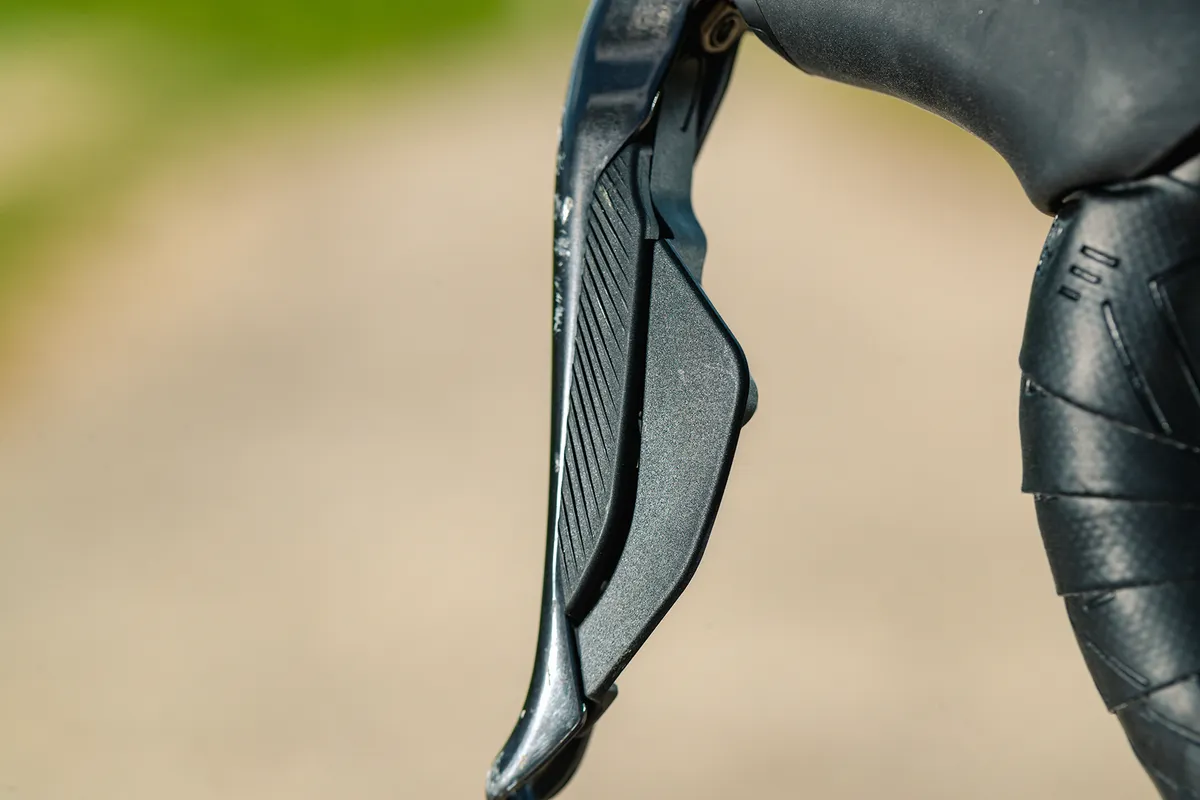
Shimano claims the new motors and circuit technology in Ultegra R8100 result in a 58 per cent increase in shift speed at the rear, and 45 per cent at the front (both of which are on a pair with Dura-Ace R9200).
I’ve never felt previous Di2 models to be in any way sluggish or laboured, and when you're dealing with fractions of a second per shift, a little less of a fraction becomes more difficult to discern. However, the new group’s shifting is superb. In fact, it’s flawless under normal road conditions. There is very little chain noise or vibration, or anything like the feeling of a chain settling.
Shimano says it has worked hard on new Hyperglide+ tooth ramp profiles for the cassette, designed to eliminate what it calls ‘chain shock’ even under heavy pedal loads.
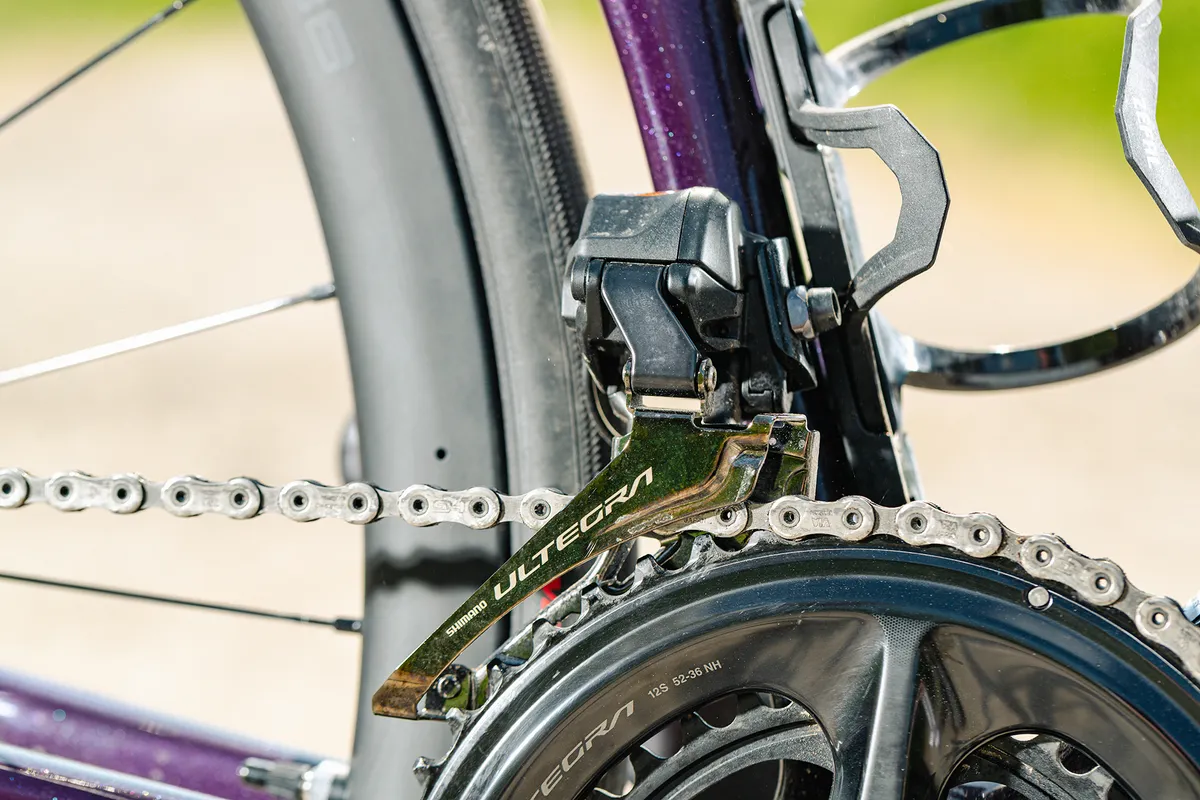
The only times I felt the shifts were under pressure was when climbing in the big ring and shifting down to the small ring on the front. There is just a short hesitation as the chain releases tension from the 52-tooth ring and drops to the 36.
On that note, this version of Ultegra has two crankset options: the 52/36t I’ve got here and a 50/34t compact crankset. If you want bigger gearing, you’ll need to look elsewhere.
Moving on, and the new cassette brings in the extra, 12th sprocket, with Shimano using the addition to tighten the progression through the gears that I personally use the most. The 11-34t cassette gets five one-tooth jumps before moving to two-tooth jumps for the next three, again offering progression with narrower gaps than the existing 11-speed cassettes.
On the road, this feels extremely smooth, enabling me to tune my cadence without coming across broader gear steps.
On the 11-30 cassette option – the only other variant Shimano offers – single-tooth jumps dominate the first eight gears.
| 11-30t cassette | 11-34t cassette |
|---|---|
| 11 | 11 |
| 12 | 12 |
| 13 | 13 |
| 14 | 14 |
| 15 | 15 |
| 16 | 17 |
| 17 | 19 |
| 19 | 21 |
| 21 | 24 |
| 24 | 27 |
| 27 | 30 |
| 30 | 34 |
Unlike SRAM’s AXS offerings, the Ultegra Di2 derailleur doesn’t come with any sort of clutch or damper. This means you get a bit of chain chatter when riding rougher roads – a couple of test ride excursions onto cobbles and even a bit of light gravel managed to upset the sweetness of Di2.
That said, I haven’t dropped a chain and, of course, there is Shimano’s GRX groupset if you’re a rider looking to venture regularly off-tarmac.
New lever shape and improved braking performance

In its earlier 11-speed formats, Ultegra Di2’s braking has proved itself over many years and many different bikes for me.
The new groupset improves things again, though, with the redesigned calipers allowing more clearance between rotors and pads. As a result, the occasional scrapes and rub I could induce in the previous version (especially in the wet) have been eliminated (on my Cannondale SuperSix EVO build, at least, because setup can play a significant part here).
The new lever shape, combined with the introduction of ServoWave – from GRX Di2 – has made the braking feel simply stunning.
ServoWave works by speeding up the initial pad travel as you pull the lever. This brings the braking in sooner than before, as well as ramping up the power in a smoother curve, so you get a much more progressive sense of the brake power increasing. You’re much less likely to put in too much brake power and scrub too much speed – which helps you ride that bit faster in all conditions.
The new, curvier shape of the lever makes braking down in the drops seem much more controlled than previously. But the biggest improvement is in the subtle reshaping of the top portion of the lever, which has a huge effect on the experience of braking from the hoods.
Let’s be honest, up on the hoods is where most of us spend the bulk of our time riding. The new lever moves more easily, in a smoother arc, rather than the initial feeling of getting over the fulcrum of the lever on the older shape. It does make you rethink and adjust how you brake while on the hoods, but ultimately it’s a change for the better that allows for much more subtlety.
Shimano Ultegra R8100 Di2 bottom line
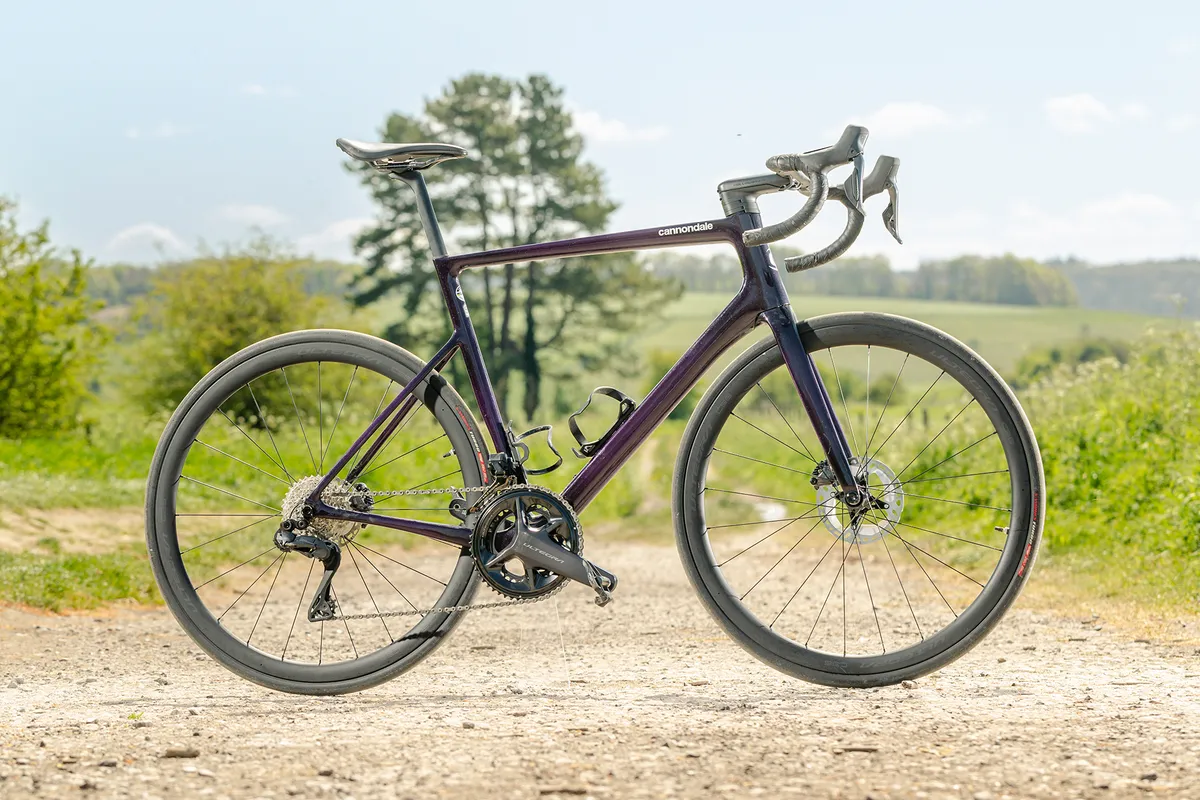
The comparisons to Dura-Ace will come thick and fast with the new Ultegra, and overall the performance is indiscernible from its pro-level sibling.
The shifts are accurate, slick and smooth. Full connectivity brings more to the party than ever before, and the braking is exemplary.
Ultegra Di2 is priced at £2,328.88 – or add £1,259.98 on top of that if you include the wheels. Compared with Dura-Ace (£3,448.88) that means you save £1,120 without wheels or £1,660 with wheels included, though it’s worth noting that this Ultegra groupset is significantly more expensive than its predecessor – it’s a premium product, no doubt about that.
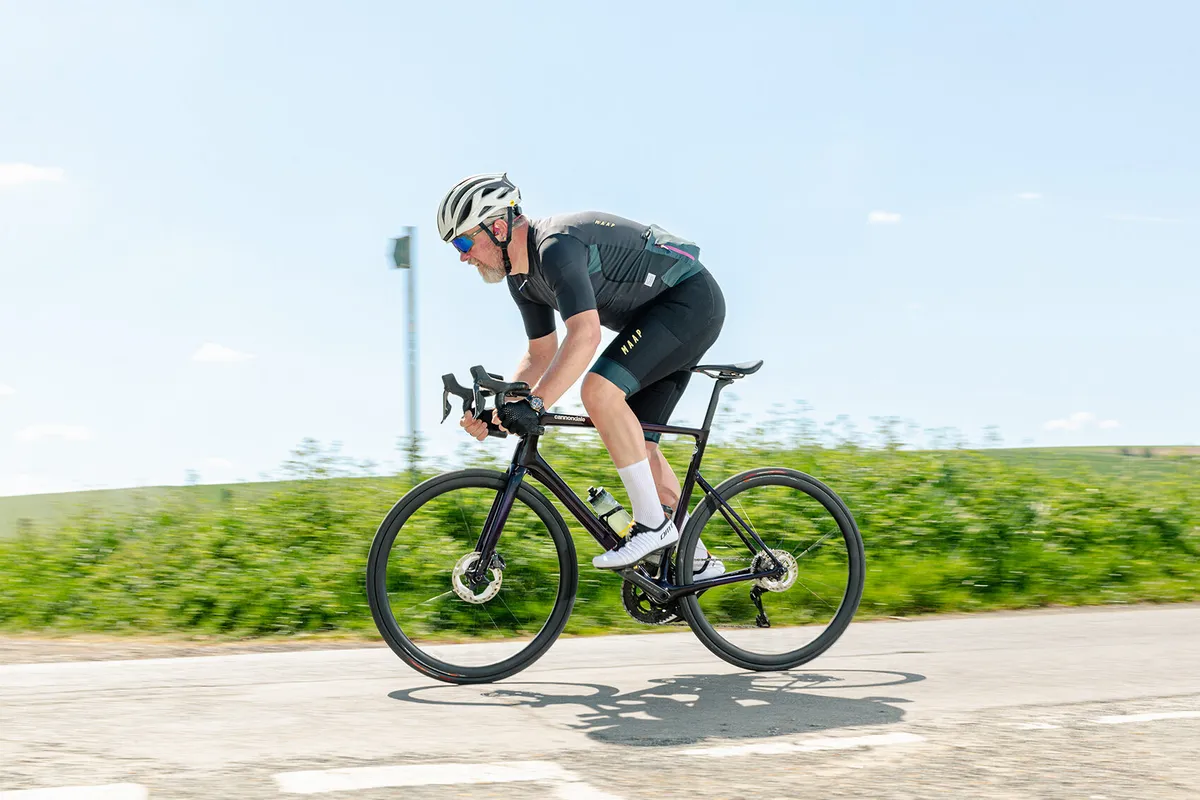
As for complete bikes, Ultegra Di2 has started to appear on machines at around £4,000 and above. For Dura-Ace Di2, you're talking, at the very least, £2,000 more than that, and often well into five figures given today’s bike prices.
When you boil down the benefits, the premium you're paying for Dura-Ace Di2 saves you 411g in weight – in real terms, that’s around the weight of a three-quarters-full 500ml water bottle.
If you must have Dura-Ace, you obviously won’t be disappointed, but Shimano Ultegra R8100 Di2 closes the gap more than ever before. If you’re looking to upgrade your current drivetrain, or you’re buying a complete bike equipped with the new Ultegra, you can do so knowing you’re getting top-tier performance from a simply brilliant groupset.
Product
| Brand | shimano |
| Price | 2328.88 GBP |
| Weight | 2716.5000, GRAM () - |
| br_whatWeTested | Rear derailleur 197g, front derailleur 116g, cassette 11-30t (297g), chain (252g), crankset 52/36t, 175mm (711g), bottom bracket (66g), shifters (391g, pair), brake calipers (282g, pair), brake hose (60g), rotor (212g), cables (14.5g), battery (53g) |
Features
| br_crankOptions | double |
| br_speed | 12 |
| br_brakeType | hydraulic_disc |
| br_cassetteOptions | 11-30t, 11-34t |
| br_chainringOptions | 50/34t, 52/36t |
SQUIRREL_13113274
